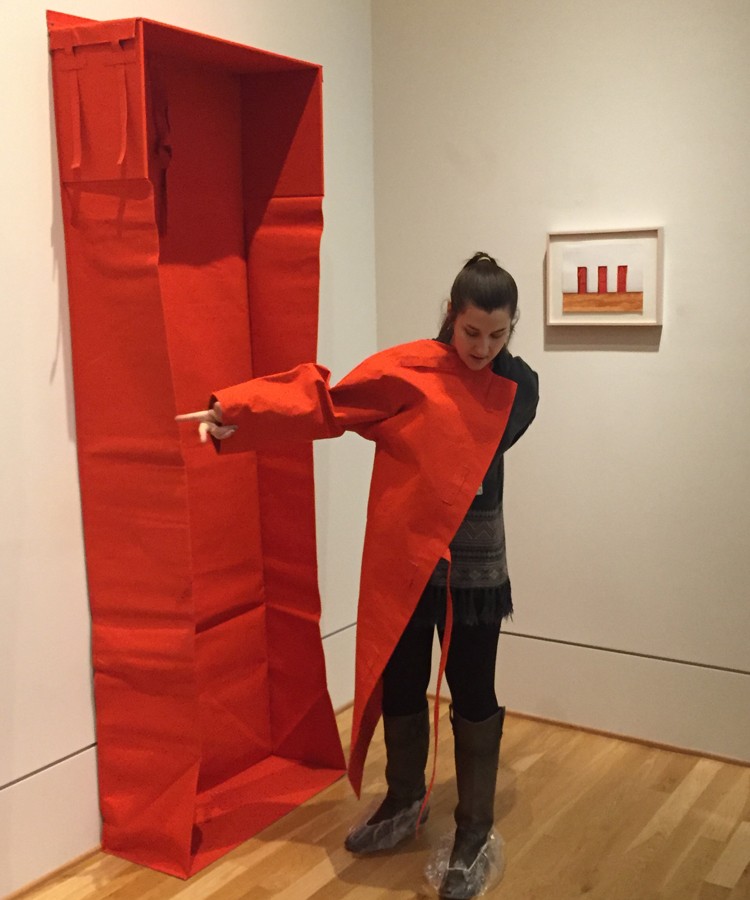This is a multi-part blog post. Read Part 1 here, and check back in the following weeks for parts 3 and 4.
Upon first glance, Franz Erhard Walther’s Red Song can be perceived as three red cloth lockers lined up next to one another with three red coats hanging inside. The artist asks the viewer to carefully untie the item hanging in the box and interact with it (visitors to the Phillips are invited to activate this piece between 2–3 pm daily). Although there is nearby text that supports the interaction between art and viewer, people are still hesitant. When I spoke to Museum Assistants about the presence of the interactive piece, their responses, in my opinion, weren’t surprising. They tell me interaction has been limited because people are afraid to touch the work or get in trouble, even with the text offering permission. This fear of art, or fear of interaction, is might come from the rituals that were created and associated with museums. In a world where rules are meant to be followed, how can museums eliminate that sense of fear?
When I first saw Red Song, I thought it was an installation, potentially referencing hazmat tents and suits. I did not realize it was an interactive piece until I spoke with a staff member. To see how others reacted to the piece, I staked out the gallery for a bit. During my first observation, I hoped one of the four people in the space would start participating. Their interaction didn’t extend beyond talking to one another about what it could be. The second experience I had with Red Song was much different; I both observed and interacted. At first I was cautious when I began untying the items and delicately placed them on my body. After I became more acquainted with the piece, though, I found myself being drawn back to my childhood, reliving memories of dressing up and living in an imaginative moment. The next thing I knew, I had spent 20 minutes dressing, undressing, tying, untying. This piece made me wonder what the compositional structure references, and if it’s supposed to have multiple people interacting with it at once or one person at a time.
Gina Cashia, Marketing & Communications Intern

